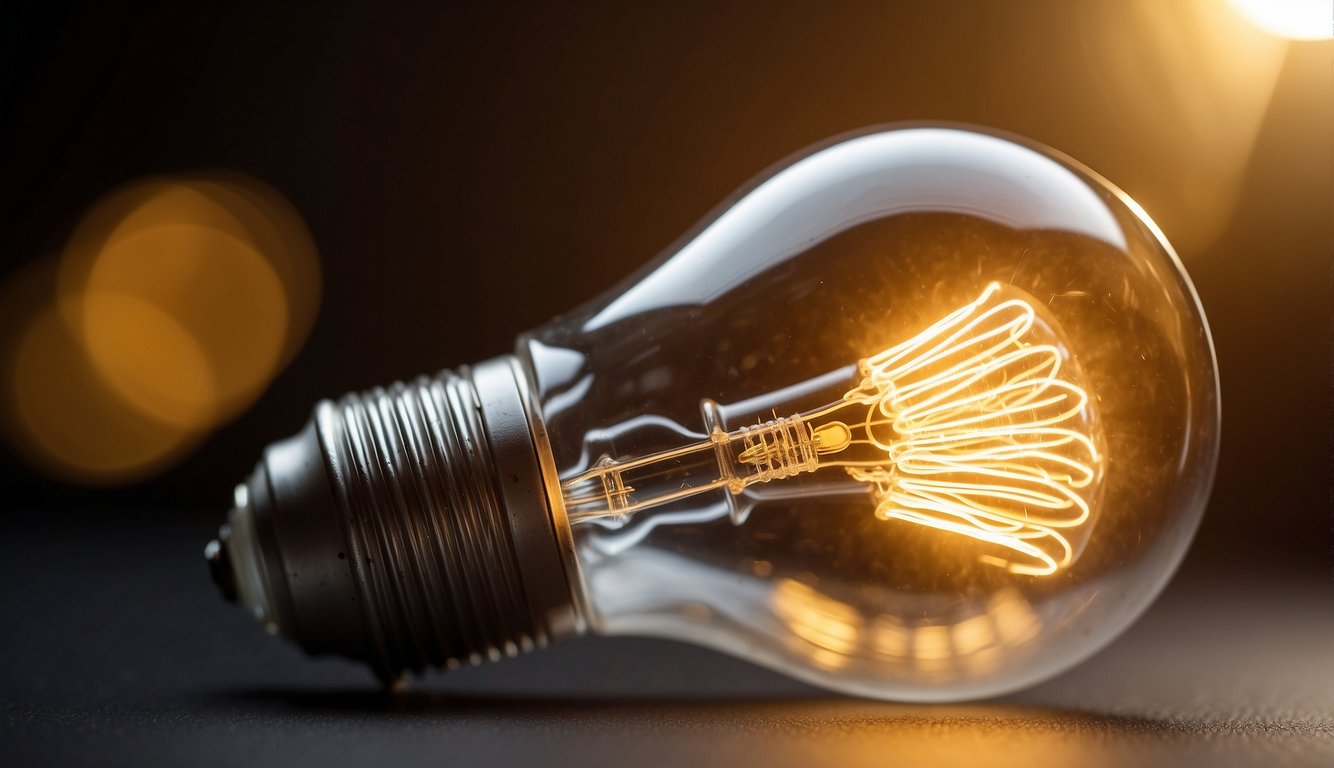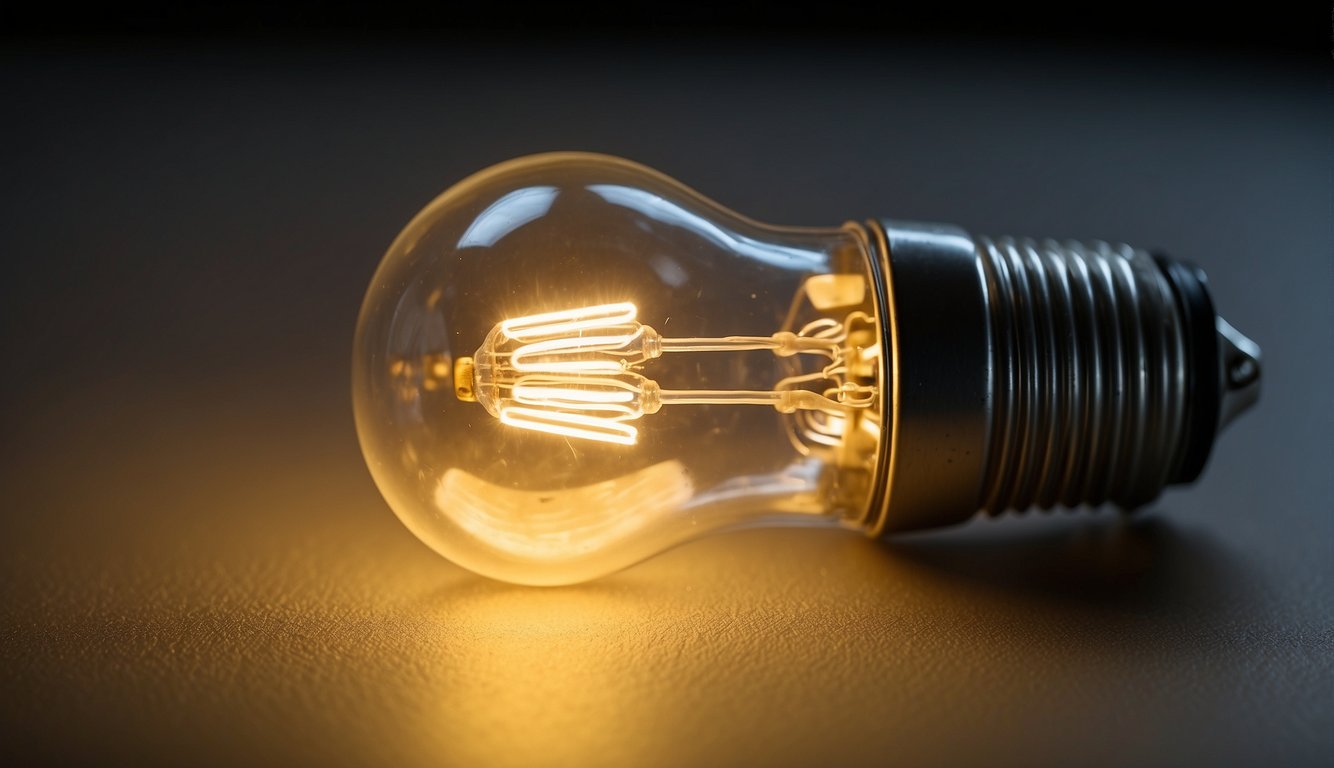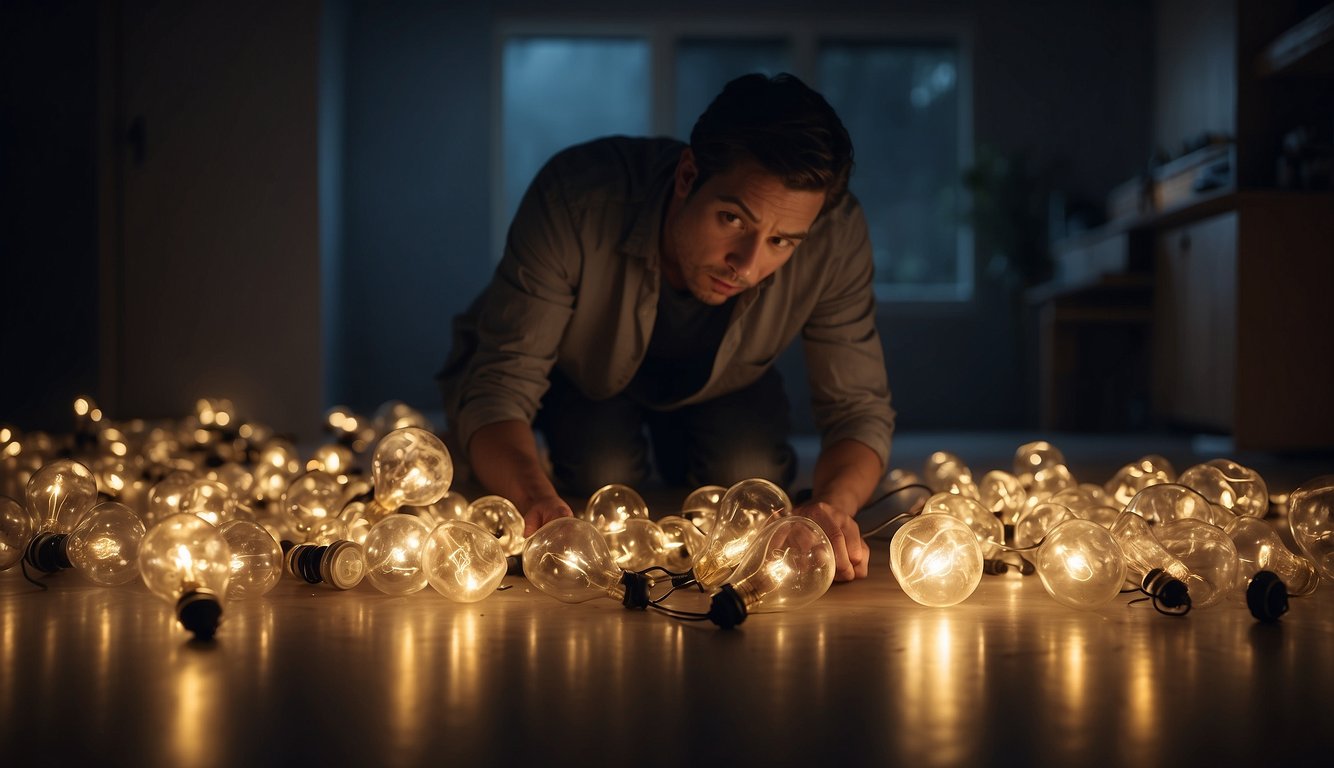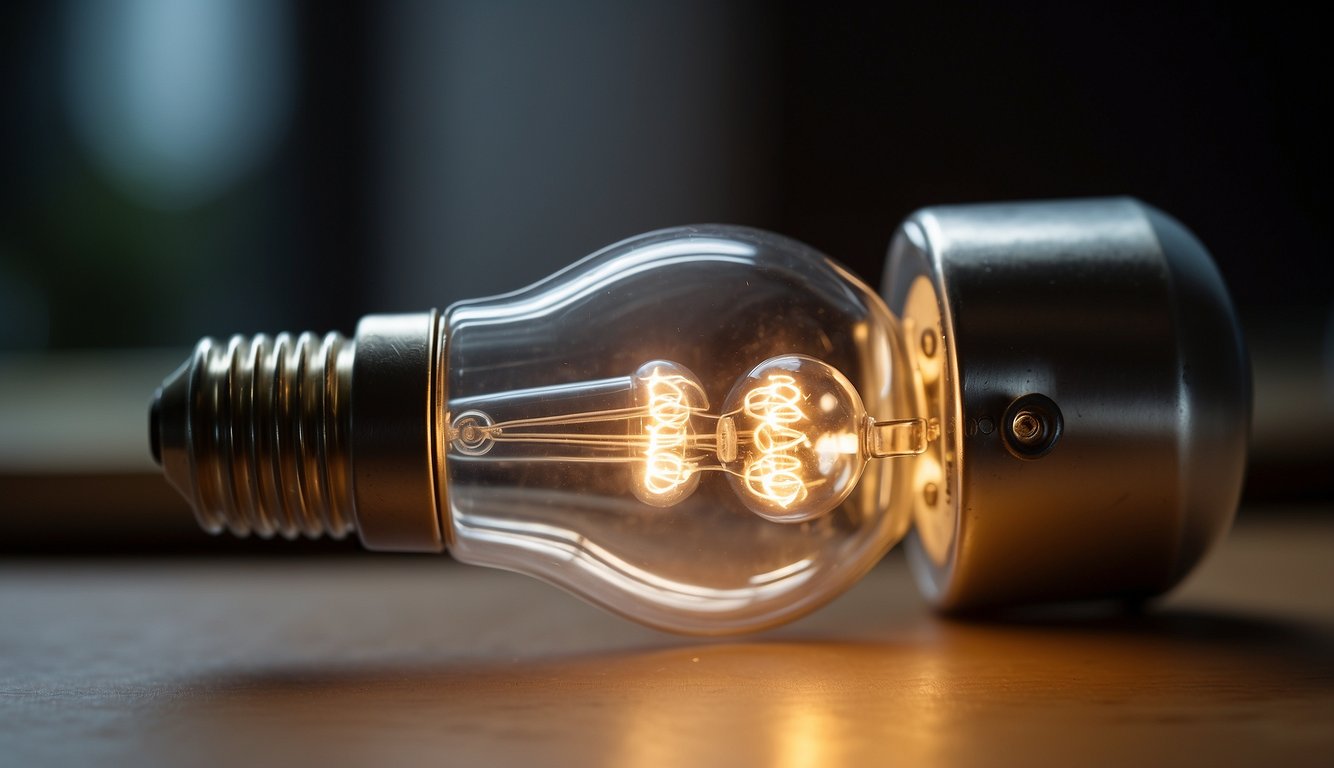Halogen light bulbs have been a staple in lighting for decades, valued for their bright light and immediate illumination. Despite their widespread use, they come with a range of drawbacks that can affect both your pocketbook and your living environment. As lighting technology advances, it’s important to understand the potential downsides of halogen bulbs—from economic considerations to environmental impact.
The disadvantages begin with energy efficiency; halogen bulbs consume more electricity compared to their modern LED counterparts, which can lead to higher energy bills. Furthermore, halogens generate a lot of heat, raising safety concerns, and often necessitate careful handling and specific fixtures to mitigate the risk of burns or fire. The environmental aspects can’t be ignored either, as these bulbs contain gases that can be problematic when released into the ecosystem.
Key Takeaways
- Halogen bulbs are less energy-efficient and can increase electricity costs.
- Heat emission from halogen lighting poses safety risks and requires careful handling.
- The environmental impact of halogen bulbs is greater due to the gases they contain.
Energy Efficiency
https://www.youtube.com/watch?v=RsDgjKj014U&embed=true

When you’re looking to light up your home, you may consider halogen bulbs for their bright and instant light. But it’s important to think about how energy-efficient your lighting choices are, especially when it comes to your electricity bill and environmental impact.
Comparison with LED Bulbs
Halogen bulbs are often pegged as a less energy-efficient option, especially when compared to LED bulbs. Here’s why:
-
Electricity Consumption: Halogen bulbs consume more electricity to produce the same amount of light as LEDs, leading to higher energy costs.
-
Heat Output: Halogens turn a lot of the energy they use into heat, which is wasted energy.
-
Lifespan: On average, a halogen bulb lasts about 2,000 hours, while an LED can last up to 25,000 hours.
-
Cost Over Time: Due to the longer lifespan and lower energy use of LEDs, you’ll save money in the long run despite the initially higher cost of LED bulbs.
By choosing LEDs over halogens, you’re opting for a more energy-efficient lighting solution that can save you money on your electricity expenses and reduce your environmental footprint.
Heat Emission and Safety Concerns
https://www.youtube.com/watch?v=qNpF8rB5sNc&embed=true
When using halogen light bulbs, you should be mindful of the considerable heat they emit, which can elevate the risk of burns and fires, especially in high temperature operations.
Risk of Burns and Fire
Halogen bulbs operate at much higher temperatures than LED or fluorescent lights. Because of their intense heat output, they’re hotter to the touch, which poses a direct risk of burns. Holding a halogen bulb for just a few seconds without proper protection can result in a painful injury. Moreover, the high temperature could potentially ignite nearby flammable materials, significantly increasing the danger of a fire. You can learn more about the safety concerns related to the heat from halogen bulbs at Superior Lighting.
High Temperature Operations
The high temperature operations of halogen light bulbs don’t just affect direct touch. They can also create an unsafe environment by elevating room temperatures or by degrading light fixtures not designed for such conditions. There are cases where prolonged exposure to high heat leads to deterioration of sensitive materials or finishes. Consult the insights on thermal differences between halogen bulbs and LEDs for in-depth understanding of how halogen heat generation compares with more modern lighting solutions.
Lifespan and Replacement Costs
https://www.youtube.com/watch?v=yM_E0mHi9Wg&embed=true
When considering lighting options for your home or office, it’s important to weigh the longevity and associated costs of different bulb types. Halogen bulbs, while an improvement over incandescent bulbs, do not match the extended lifespan of LED light bulbs, leading to more frequent replacements and higher long-term costs.
Comparison with Incandescent and LED Bulbs
Halogen Bulbs: Your standard halogen bulb has a life expectancy ranging from 2,000 to 4,000 hours. Although they last longer than traditional incandescent bulbs, the cost of replacement can add up over time due to their relatively short lifespan. If you’re using halogen lights, you might find yourself replacing them more often than you’d like, leading to a cycle of ongoing expenses.
Incandescent Bulbs: In comparison, incandescent bulbs typically offer a shorter lifespan than halogens. While they are often less expensive to purchase initially, the cost of frequent replacements makes them an expensive option in the long term. With an average life of about 1,000 to 2,000 hours, they tend to be the least efficient choice regarding both energy use and replacement costs.
LED Light Bulbs: On the other hand, LED bulbs stand out for their impressive longevity. An LED light bulb can last for over 25,000 hours before needing replacement. Analyzing the energy costs between these bulbs clarifies the savings you can achieve with LEDs due to their extended lifespan. Not only do LEDs reduce the frequency of bulb replacement, but also they can significantly lower your long-term expenditures.
By understanding the life expectancy and replacement costs associated with halogen, incandescent, and LED bulbs, you can make an informed decision that aligns with your budget and preferences for home or office lighting.
Environmental Impact
« Free Light Bulbs from Entergy: Brighten Your Home Economically!
Simple Guide to Light Bulbs: Choosing the Right One for Your Home »
https://www.youtube.com/watch?v=BND7WRvuCpM&embed=true
When considering the environmental impact of halogen light bulbs, you need to be aware of their chemical composition and energy consumption, both of which have significant consequences for the environment.
Chemical Composition
Halogen bulbs are made from a combination of materials that may have varying impacts on the environment. The filament, typically tungsten, is encased within a quartz envelope containing a halogen gas such as iodine or bromine. In some halogen bulbs, argon or xenon gases are also used to improve performance and longevity. While these gases help increase efficiency and reduce filament evaporation, their extraction and use necessitate careful handling due to their potential environmental effects.
Energy Consumption
When it comes to energy use:
- High Energy Use: Halogen bulbs consume more energy than their LED or fluorescent counterparts. This is because they are less efficient at converting electricity into visible light, hence more of the input energy is lost as heat rather than radiation in the visible spectrum.
- Increased Carbon Footprint: The higher energy requirements of halogen bulbs lead to greater carbon dioxide emissions when the electricity comes from fossil fuels. You can find an examination of these environmental effects on energy consumption and carbon emissions.
- Shorter Lifespan: A typical halogen bulb has a shorter lifespan compared to an LED bulb, which means more frequent replacements and, subsequently, a larger amount of waste. You can compare the lifespans and understand how it affects environmental waste on waste generation and resource consumption.
The evidence suggests that switching to more energy-efficient lighting options is a beneficial choice for both your wallet and the planet.
Light Quality and Performance
https://www.youtube.com/watch?v=JAlI8sF5JhY&embed=true
When you’re looking into halogen light bulbs, you’ll find that they offer unique qualities in terms of color temperature and brightness, as well as distinct dimming capabilities, which both play a crucial role in their performance.
Color Temperature and Brightness
Halogen bulbs tend to emit a very bright light, which is closer to natural daylight compared to some other types of light bulbs. They have a higher color temperature, which results in a crisp, white light, enhancing visibility. In terms of lumens, halogen lamps generally provide a higher output for the energy consumed, meaning you get more brightness per watt.
Dimming Capabilities
One of the noteworthy performance features of halogen bulbs is their ability to dim smoothly. Unlike some energy-efficient bulbs that may not dim all the way or can flicker, your halogen bulbs typically dim without issues, giving you more control over the ambiance in your space. However, it should be noted that not all halogen light bulbs dim equally, and performance can vary between different brands and models.
Physical Attributes
When you’re choosing lighting for your home, you may encounter a variety of bulb sizes and designs. Halogen light bulbs offer distinct characteristics that set them apart from other bulbs such as LEDs or fluorescents.
Bulb Size and Design
Halogen bulbs often have a compact size, making them a fit for many fixtures where a larger bulb wouldn’t be suitable. This size advantage means you can use them in a variety of settings, from desk lamps to overhead recessed lighting. Their design resembles traditional bulbs, with a similar shape and filament structure, contributing to a seamless transition if you’re upgrading from traditional incandescent bulbs.
The design of halogen bulbs, often influenced by manufacturers like GE, is engineered to maximize lifespan and performance while maintaining the classic look. It’s important to handle these bulbs carefully since their design can be more fragile compared to alternatives like solid-state LEDs.
Operational Issues
https://www.youtube.com/watch?v=wd2Qz14Nu78&embed=true
When you’re dealing with halogen light bulbs, there are specific operational issues you should be aware of. These issues can impact both the performance and safety of your lighting.
Heat-Related Limitations
Halogen bulbs are designed with a tungsten filament encased in a small envelope filled with halogen gas, which allows them to operate at high temperatures. However, this high operation temperature comes with considerable heat output. It’s reported that these bulbs can get extremely hot during use, raising concerns over added heat in a space. High temperatures can lead to burn hazards and possible damage to light fixtures or surrounding materials. Additionally, the elevated pressure inside the bulb due to the high temperature makes halogen bulbs more prone to breaking if not handled properly.
Sensitivity to Skin Oils
The tungsten wire in your halogen bulb is very sensitive to skin oils. When you touch the bulb with your bare hands, oils from your skin can transfer onto the glass, creating a hotspot on the filament when the bulb is lit. This hotspot can decrease the lifespan of your bulb as it causes the tungsten to break down unevenly, leading to a bulb failure. To avoid this, it’s always best to handle these bulbs with a cloth or a tissue during installation.
Economic Considerations
When considering halogen bulbs, it’s important for you to balance initial affordability against long-term expenses. While halogen bulbs might seem budget-friendly at first glance, their cost of ownership can be surprisingly high over time.
Cost of Ownership
Halogen bulbs, with their tungsten vapor technology, provide a significant light output that has traditionally been valued for its brightness and color temperature. However, they are often more expensive to operate than their modern LED counterparts. Here’s a breakdown to help you understand:
-
Purchase Price: Typically, halogen bulbs are less expensive to purchase than LEDs. However, they have a shorter lifespan, which means you’ll have to replace them more frequently.
-
Energy Consumption: Halogen bulbs consume more energy to produce the same light output as LEDs. This increased energy usage results in higher electricity bills for you.
-
Lifespan: A typical halogen bulb lasts about 1,000 to 2,000 hours, as opposed to 25,000 to 50,000 hours for an LED. This shorter lifespan leads to more frequent replacements and higher costs over the bulb’s lifetime.
-
Heat Output: Halogen bulbs produce more heat, which can increase your cooling costs, especially in warmer months.
To help you visualize the cost comparison:
| Bulb Type | Lifespan (hours) | Wattage | Energy Costs (over 25,000 hours) |
|---|---|---|---|
| Halogen | 1,000 – 2,000 | 42W | $$$ |
| LED | 25,000 – 50,000 | 10W | $ |
In summary, while the upfront cost of halogen bulbs may be lower, the long-term expenses due to energy consumption and frequent replacements make them an expensive choice in the grand scheme of things.
Thermal Management
https://www.youtube.com/watch?v=iigXEIKzG50&embed=true
When considering halogen bulbs, it’s essential to understand how they handle the heat they produce. Halogen bulbs operate at higher temperatures, leading to challenges in thermal management that affect both their efficiency and safety.
Dissipation of Heat
Halogen bulbs generate a lot of heat, primarily because they are designed to produce a bright light. Much of the energy they consume is converted into infrared light, which emits considerable warmth. This heat must be managed correctly to prevent damage to both the bulb and its surroundings.
Your halogen bulb is coated with a special material that helps manage this heat. This coating is crucial because it allows the bulb to reflect back some of the heat, improving efficiency by directing more light forward. However, ineffective or poor-quality coatings can lead to suboptimal heat management.
To illuminate your space effectively, ensure your halogen lighting fixtures are well ventilated. Proper ventilation helps in the dissipation of heat, which prolongs the bulb’s lifespan and reduces the risk of overheating, which may otherwise lead to potential safety hazards like melting fixtures or fire risks.
Compatibility and Usability
When considering lighting options, it’s important to assess the compatibility and usability of halogen bulbs in your fixtures. Halogen bulbs offer distinct characteristics that set them apart from CFLs, traditional bulbs, and LEDs.
Fixture Requirements
Your current lighting fixtures play a critical role in determining if you can efficiently use halogen bulbs. These bulbs require fixtures that can handle the higher heat output as compared to CFLs and LEDs. You’ll find that some fixtures, especially older ones, may not be compatible or safe to use with halogens due to the excess heat they produce. It is vital to check the fixture’s rating and ensure it matches the halogen bulb’s requirements before installation.
Unlike LEDs and some CFLs, halogens cannot always be used with dimmer switches. If dimming your lights is crucial for you, you’ll need to verify that your dimmer switch is halogen-compatible. In comparison, most LEDs are made with dimmable options readily available and specified on the packaging.
Moreover, halogens have a distinct pin or screw base that may not fit in all fixtures. You’ll often find that CFLs and traditional bulbs are more uniformly designed in terms of base compatibility.
Remember that while halogens can be more luminous than some traditional bulbs, they do not match the energy efficiency and lifespan of modern LED lighting solutions. When you are choosing bulbs, it’s not just about the socket fit or immediate brightness—it’s about finding the right balance for your long-term lighting needs and ensuring that the bulbs you choose will work effectively with your existing fixtures.
Market Trends
In the realm of lighting, your choices are evolving rapidly due to market trends that favor eco-friendly and energy-efficient solutions. As you consider lighting options, it’s essential to be aware of how these changes impact the halogen bulb segment.
Advancements in Lighting Technology
Halogen bulbs, once a staple for their bright light and dimming capabilities, are facing stiff competition from LED light bulbs. LEDs represent a substantial leap forward because they consume less energy and have longer lifespans than incandescent and halogen light bulbs. This shift signifies a growing trend towards more efficient lighting solutions, both for environmental benefits and cost savings on energy bills.
Recent market insights suggest that LEDs are not just alternatives but are becoming the predominant choice for consumers and businesses alike. This preference is driven by a desire to reduce energy consumption and the appeal of lower maintenance due to the LEDs’ longer operational life.





